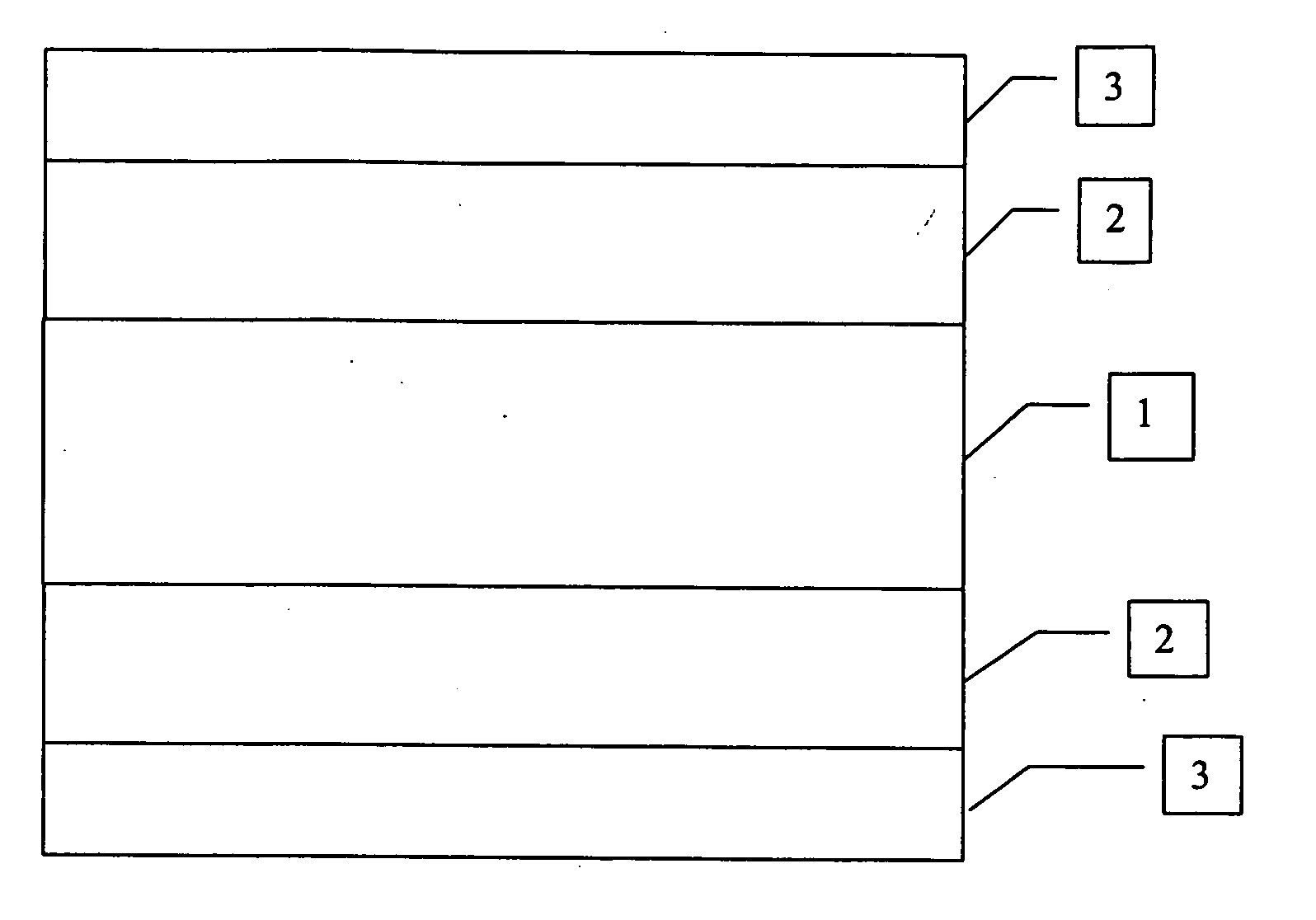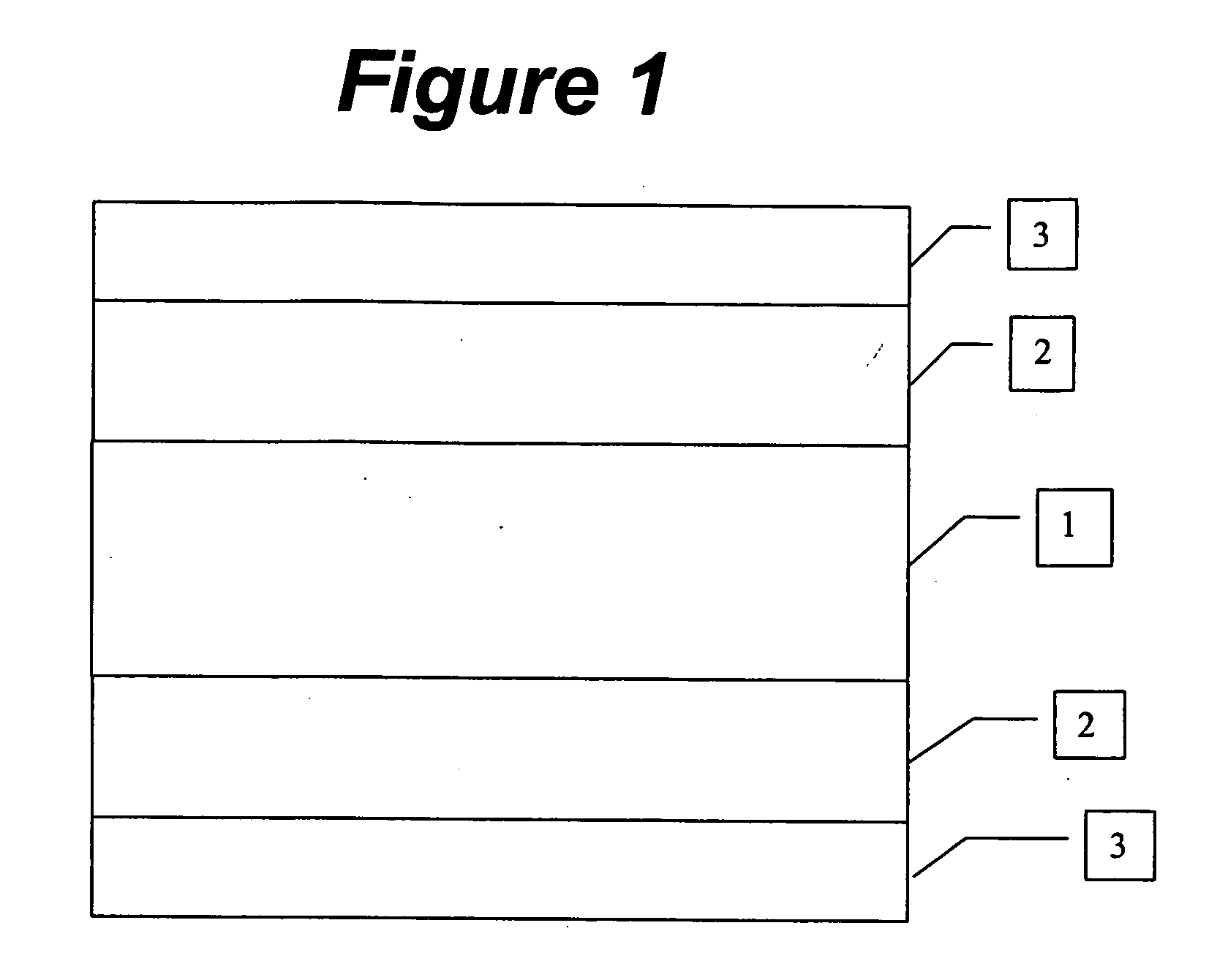Silicone-free multilayer shrink film for high speed packaging lines
- Summary
- Abstract
- Description
- Claims
- Application Information
AI Technical Summary
Benefits of technology
Problems solved by technology
Method used
Image
Examples
examples
[0067] Early attempts at preparing the biaxially oriented films of the present invention using cyclic-olefin copolymers (COCs) were unsuccessful. Problems encountered were maintaining the second bubble of a double-bubble processing line. In general early COCs, manufactured with Ziegler-Natta catalysts had too high of glass transition temperature and yielded films having inferior haze values. These limitations have been overcome with recent advances in the manufacture of COCs. All of the inventive examples utilize metallocene catalyzed COCs (when present) with a glass transition temperature below 80° C. and a melt flow rate of approximately 1.0 at 190° C. For example, Ticona 9506 Topas™ brand COC has a glass transition temperature of about 68° C. and Ticona 8007 Topas™ has a glass transition temperature of about 75° C. Both Ticona 9506 Topas™ and Ticona 8007 Topas™ are suitable for the present invention.
[0068] COCs having the combination of properties provided in Table 1 below are p...
PUM
| Property | Measurement | Unit |
|---|---|---|
| Fraction | aaaaa | aaaaa |
| Fraction | aaaaa | aaaaa |
| Fraction | aaaaa | aaaaa |
Abstract
Description
Claims
Application Information
 Login to View More
Login to View More - R&D
- Intellectual Property
- Life Sciences
- Materials
- Tech Scout
- Unparalleled Data Quality
- Higher Quality Content
- 60% Fewer Hallucinations
Browse by: Latest US Patents, China's latest patents, Technical Efficacy Thesaurus, Application Domain, Technology Topic, Popular Technical Reports.
© 2025 PatSnap. All rights reserved.Legal|Privacy policy|Modern Slavery Act Transparency Statement|Sitemap|About US| Contact US: help@patsnap.com



